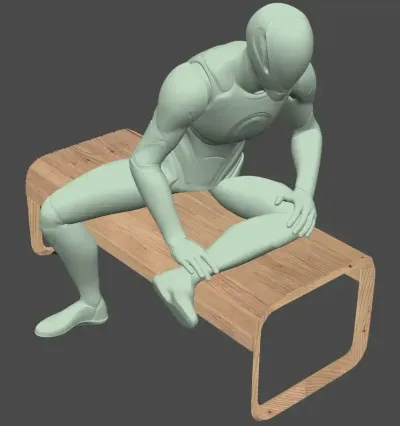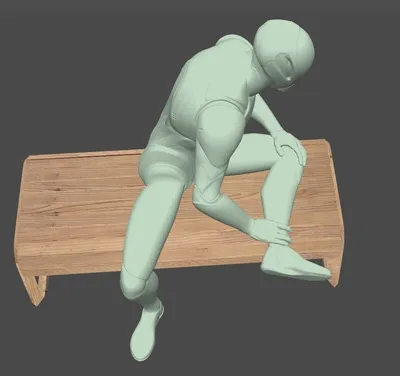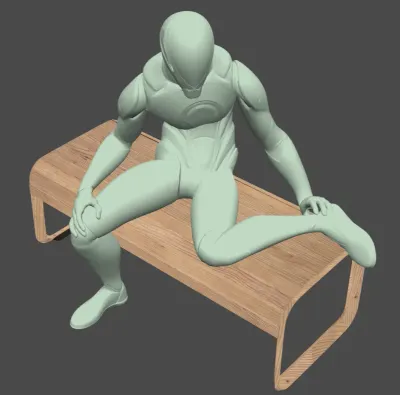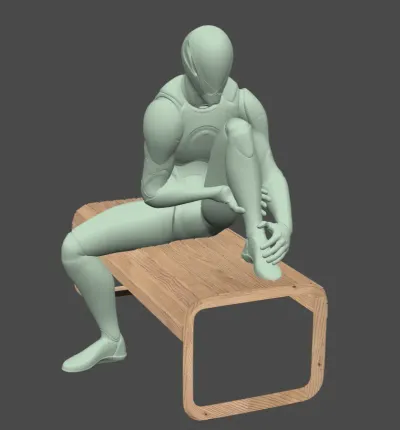You know how calf pain can just show up out of nowhere and mess up your whole day? Your leg hurts, walking feels weird, and sometimes you’re not even sure what you did to cause it.
We’ve collected quite a few methods over the years for dealing with this annoying problem. Most calf pain actually falls into two main categories, and once you figure out which type you have, the relief usually comes pretty fast.
Two Types of Calf Pain We Come Across
The first type is pretty straightforward - your calf just feels sore or achy, but when you touch it, the muscle feels normal. Maybe you overdid it at the gym or walked more than usual.
The second type is trickier. Your calf hurts AND feels weird when you touch it. The muscle might feel hard, cramped up, or like it’s in a knot. This one needs a different approach.
Honestly, if you’re not sure which one you have, just try both methods. They’re both gentle enough that you won’t make things worse.
For Regular Calf Soreness - The Pressure Point Method
This one’s kind of interesting. We came across this technique through some traditional medicine sources. It seems weird, but it works really well for a lot of people.
You’ll need someone to help, or you can do it yourself if you’re flexible enough. Have them put their hand about four fingers below your belly button and press down firmly. Keep that pressure the whole time.
Now lift your knee on the sore side and bring your opposite elbow toward it. Try to touch them together. Do this about 30 times.
If you’re doing it alone, just lie down and use your own hand to press on that spot below your belly button. Same movement - knee up, opposite elbow toward it. The key is keeping good pressure on that belly spot the whole time.
For Cramped-Up Calves - Direct Massage
When your calf feels like a rock or keeps cramping up, you need to get your hands dirty. This is more hands-on work, but it’s really effective.
Find a couch or chair where you can prop up your leg. You want easy access to your calf muscle. By the way, if your knee starts hurting while you’re doing this, just take a break. No point pushing through knee pain to fix calf pain.

Start at your ankle where that thick tendon is - that’s your Achilles tendon. Use your thumb and press into it firmly. Make little circles with your thumb, maybe 5-10 circles in each spot, then move up a bit.

Don’t go too fast or too slow with the pressure. You want steady, firm circles. Work your way up the entire tendon area like this.
Once you get to the thick part of your calf muscle, you’ll need both thumbs. The muscle is thicker here so you need more pressure. Use a kind of “page-turning” motion - press down and roll your thumbs like you’re turning pages in a book. Cover the middle and upper parts of your calf.
Actually, don’t forget to flip your leg over and work on the other side too. It might be awkward and you can probably only use one hand, but that’s fine.

For the final step, stand your leg up straight. Now you’re going to grab the muscle - not just the skin, but really grab the muscle itself. Pinch it and lift it outward. Do this maybe 5-10 times in each spot, then move up a finger-width and repeat.

A few things to keep in mind: if it hurts too much, ease up on the pressure and work your way up gradually. You’re trying to get to the deeper muscle layers, not just the surface. Some pain is normal with massage, but if it becomes too much, just stop.
What Usually Happens Next
Most people feel a big difference right away. Your calf should feel lighter and less tight. The pain might not go away completely, but it should be much better.
Things That Help You Heal Faster
We’ve noticed a few simple things that really do seem to make a difference. First, try eating lighter foods for a day or two. Heavy meals make your body work harder and that can slow down the healing process.
Also, don’t go running or doing intense workouts right away. I know it’s tempting when you feel better, but you’ll just set yourself back.
And honestly, try to stay in a good mood. I know that sounds silly, but stress and feeling frustrated actually slow down your body’s healing process.
Why This Actually Works
People often wonder why their calves hurt in the first place. Your calf muscles are basically your second heart - they pump blood back up to your heart. When that pumping gets messed up, inflammatory stuff builds up in the muscle and causes pain.
Both of these methods work by getting blood flowing better again. Better blood flow means your body can clear out all that inflammatory junk that’s causing the pain.
While you’re getting better, keep things simple. Light foods, no intense exercise, and try not to stress about it. Heavy foods and stress just slow everything down.
Bottom Line
These two methods work really well for most calf pain. We’ve seen these methods help many people over the years, and they’re completely safe to try.
Of course, if your pain sticks around or gets worse, you should probably see someone about it. But for regular calf pain that just showed up out of nowhere, this should get you walking normally again pretty quickly.